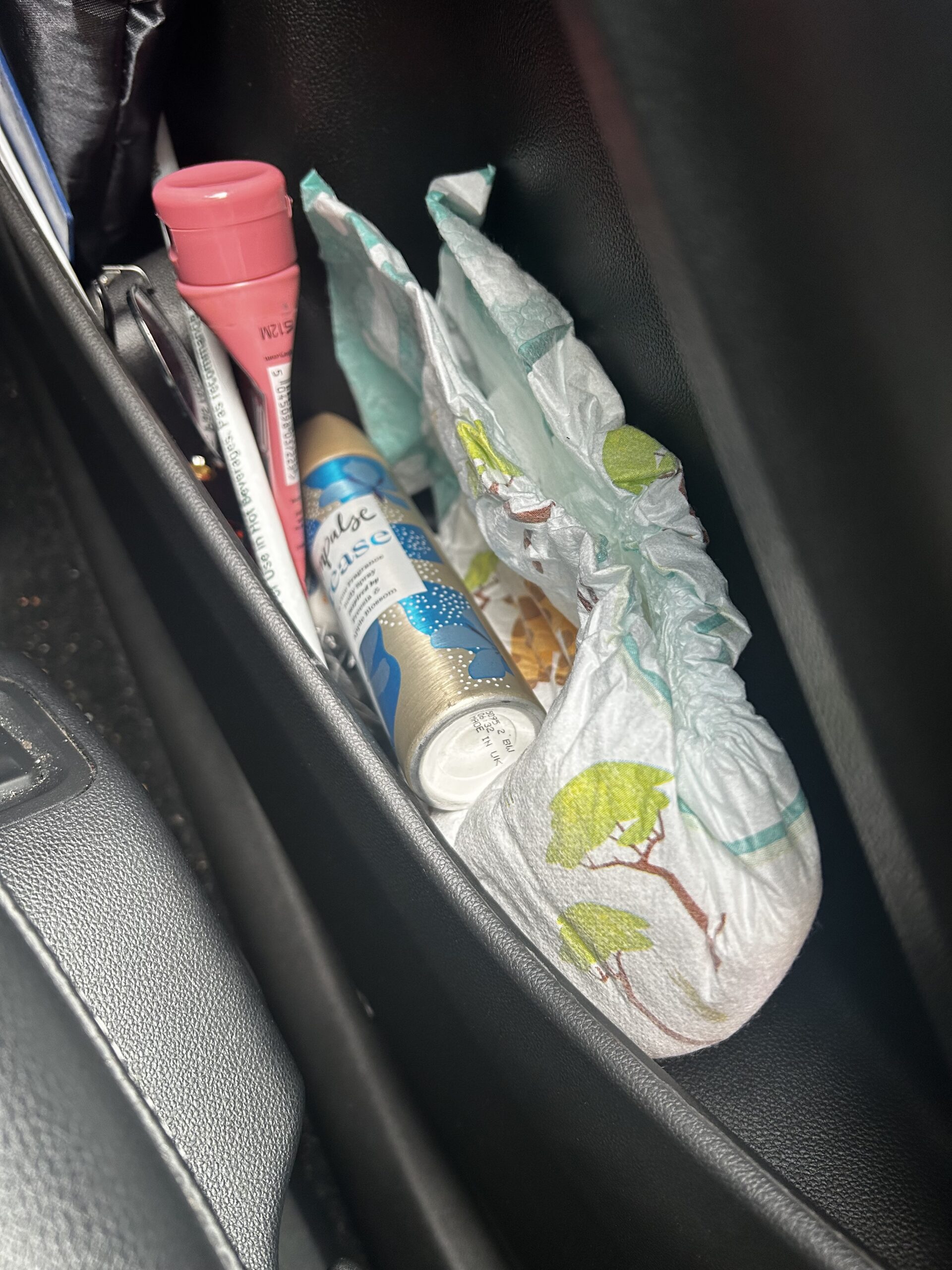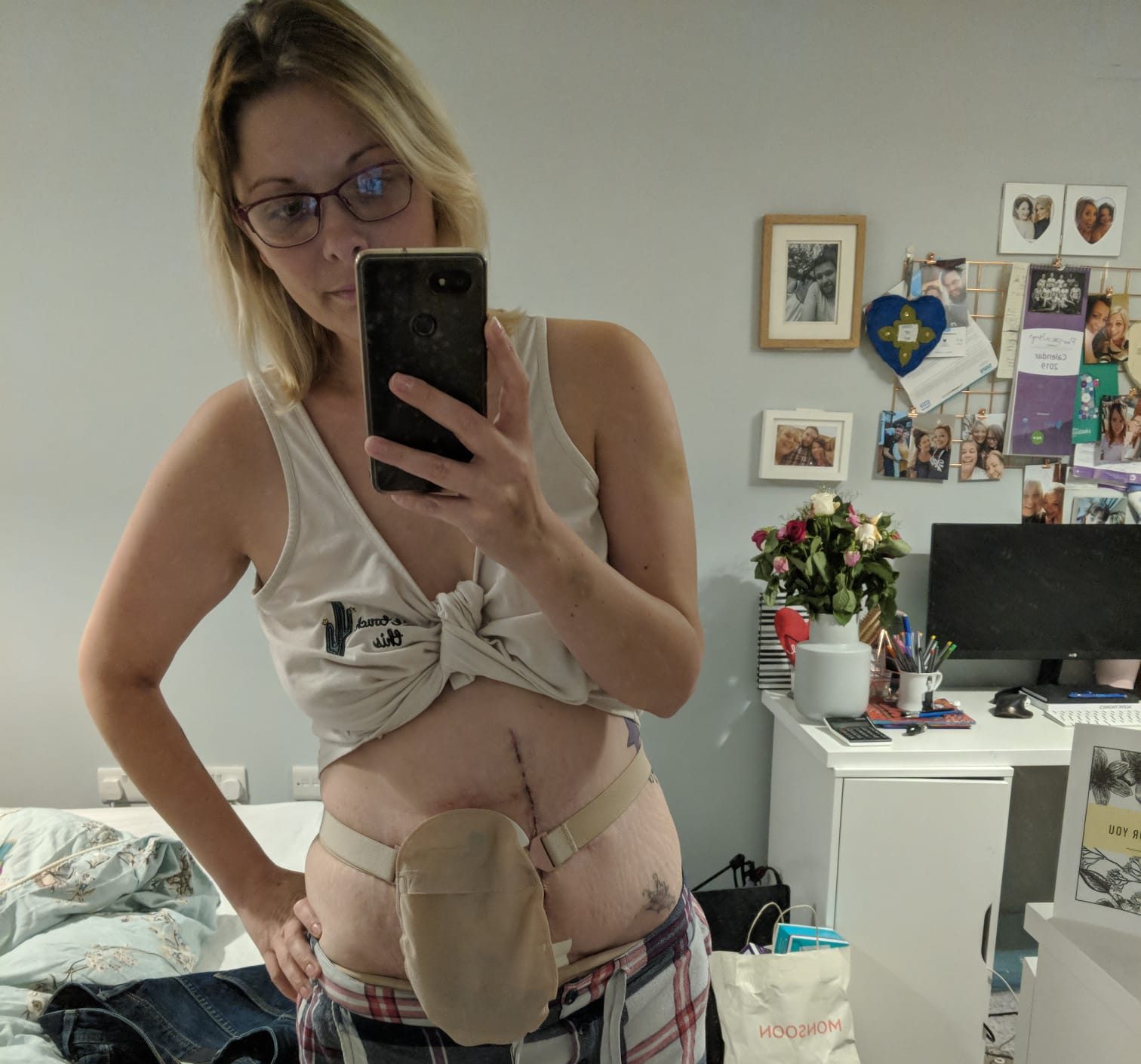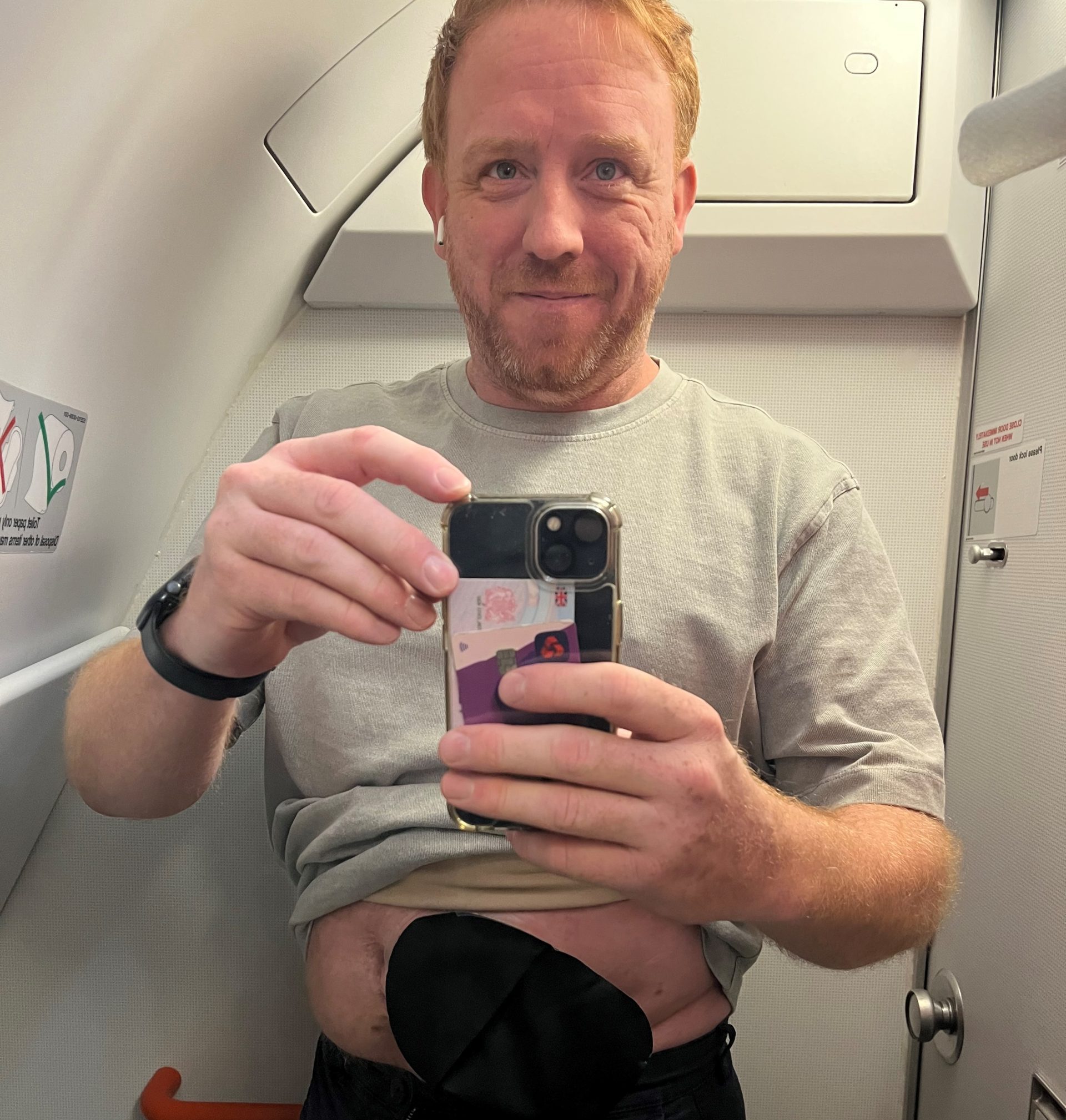
Coping strategies for new ostomates | by Rachel
You have woken up post-surgery to a new addition surgically attached to your stomach, probably covered by a pouch that is clear so everything is on view. Your head and your heart now need to start the epic journey of getting to grips with everything, and getting to a place where you feel ok. Your stoma nurse is your key person to get support and information from, and there is a wealth of information online. Here are some tips to get you started:
Educate yourself
Learn about the different types of stoma pouches. Whether you have a 1-piece recommended, a 2-piece, a convex base, or a flat base, understanding the different types and what is best for you is important. Your body can change over time, and as a result, the type of stoma pouch you need may change. For example, when pregnant I found I needed to change from a flat base to a convex base as the shape of my stomach changed, and how the pouch sat as a result. Where you live, and what is available to you can vary greatly. Some people may regularly see a stoma nurse, whereas others may only see one if they actively reach out. It is important to keep an eye on any changes and when something doesn’t feel right, get advice and help straight away. Nothing is too small or too little to ask. Learning things to look out for is very important. Your stoma nurse will inform you of these before you are discharged.
Talk about it
Learning to feel somewhat comfortable with talking about your experience will help you process what has happened. Find your trusted circle and confide in them when things get too heavy to carry. Take the help when offered, something we all need to do more. If you have the financial means to do so, counselling could be an avenue to look into if you are struggling to get to terms with things. Some employers may offer counselling as part of your job package. When I worked for the local council in an education setting, this was something I had no idea was offered. The charity Mind can also provide sessions if you qualify. There are options out there if you get researching. There may be a stoma support group local to you. This could be found on Facebook, in the back of stoma companies/charities magazines, and on their websites.
Give it time and be kind to yourself
You don’t typically see someone having had stoma surgery, skipping out the door, and cracking on with life the way they did. At around 6 weeks, it is expected that most can return to some form of exercise (slow and steady) – sometimes sooner. We are all different, and our bodies will vary in their condition going into the surgery. Healing isn’t linear, and you may find some hurdles such as finding the right stoma pouch for you, and your skin around your stoma (known as the peristomal skin) getting used to having contact with the pouch and stool. Don’t compare your own healing with someone else’s. You will get there in your own time when it is right for you.
Plan things to look forward to that can be done at home until you have the confidence and venture far. A family games night, movie night or book club. Paint and sip evenings can be done at home and will also save you some coins! We do art club evenings and buy a plain canvas set, get some yummy snacks out, and chill as a family. Do something that makes your heart happy.
Keep a diary
Post-surgery, my first time leaving the house was to a coffee shop with a friend. I put my positive pants on that day, ordered a large latte and it felt like pure escapism catching up and doing something ‘normal’. The visit ended with my pouch leaking and needing to go home and change my clothes and shower. It was my first experience of a pouch leak and it wasn’t pretty. I was not prepared. I didn’t have spare clothes with me. Partly my fault for needing to go home, but also I hadn’t quite found the right pouch for me. It also turned out that caffeine was not my friend either and I had to cut it right down.
Some can tolerate caffeine all day and eat whatever they want. Others simply cannot. This is where a diary comes in. I wish I had recorded what I was having orally from when I got home from surgery, to track when leaks were happening. This would have made the process of elimination much quicker. When you contact your stoma nurse with teething problems early on, they will ask you about what has been happening in your day to day life. If you had a record to hand, it is much easier to reel that off. I had always done it with my son and his stoma care, but neglected to do it for myself. It is a form of self-care and looking out for yourself. Just a quick note on your device is all it takes.






